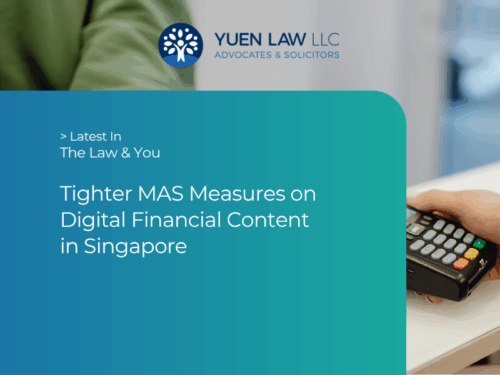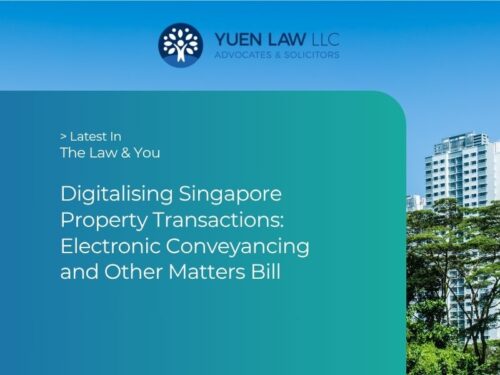When the COVID-19 outbreak started rapidly escalating, Amy went to her nearest grocery store to stock up on supplies. In her panicked state, Amy bought twenty packs of toilet paper. The next day, Amy woke up to numerous messages from her friends urging her to check a popular “Covidiots” Facebook forum. To her horror, someone had posted a photo of her and the stack of toilet paper on the page with a derogatory caption. Below the picture were thousands of comments shaming Amy. Given that Amy’s face was clearly visible, some people had even managed to identify her Facebook profile and send her abusive messages. In such a scenario, Amy may seek recourse under the Protection from Harassment Act (“POHA”).
POHA covers three main areas – harassment, unlawful stalking, and false statements of fact.
What are Offences under the Protection from Harassment Act (POHA)?
Intentionally causing harassment, alarm, or distress
Under Section 3 of the POHA, it is an offence to intentionally cause harassment, alarm, or distress by threatening, abusing, or insulting a victim. This can be done through an individual’s words, behaviour, or communication. Communication refers to the way a person receives a message, such as by images or symbols. The offence also covers harassment through electronic means like the Internet.
Alternatively, personal information of the victim may have been published, otherwise known as “doxxing”. Examples of such information are their name, address, contact information, or image.
The perpetrator of such an offence may be liable to a fine of up to $5000 and/or imprisonment for up to 6 months. However, it is a defence if the perpetrator’s conduct was reasonable. What is considered reasonable depends on the act and its effect on the victim. Generally, it seems that personal attacks with no factual basis will not be considered reasonable conduct.
Harassment, Alarm, or Distress
Under Section 4 of the POHA, it is an offence to use any threatening, abusive, or insulting words, behaviour, or communication which is perceived by the victim likely to be caused harassment, alarm, or distress. Unlike Section 3 of the POHA, there is no requirement for intention here.
The perpetrator may be liable to a fine of up to $5000. However, it is a defence if the perpetrator’s conduct was reasonable, or the perpetrator had no reason to believe the victim would know about the words, behaviour, or communication made.
Fear, Provocation, or Facilitation of Violence
Under Section 5 of the POHA, it is an offence to intentionally cause the victim to believe that violence will be used against him or to provoke violence from the victim through threats, abuse, or insults. These threats, abuse, and insults may come in the form of words, behaviour, or communication made.
Alternatively, it is also an offence to “doxx” the victim, intending the victim to believe violence will be used against him or knowing the victim will likely believe that violence will be used against him.
The perpetrator may be liable to a fine of up to $5000 and/or imprisonment for up to 12 months. However, it is a defence if the perpetrator’s conduct was reasonable, or the perpetrator had no reason to believe the victim would know about the words, behaviour, or communication made.
Cases Involving Public Servants or Public Service Workers
Under Section 6 of the POHA, it is an offence to threaten, abuse, or insult public servants and public service workers in relation to the execution of their public duties. In such cases, the perpetrator must have known or should have known that the victim was acting as a public servant or public service worker.
The perpetrator may be liable to a fine of up to $5000 and/or imprisonment for up to 12 months. However, it is a defence if the perpetrator’s conduct was reasonable, or the perpetrator had no reason to believe the victim would know about the words, behaviour, or communication made.
Unlawful stalking
Under Section 7 of the POHA, it is an offence to unlawfully stalk another person. Unlawful stalking consists of the stalking itself, which then causes harassment, alarm, or distress to the victim. In addition, the perpetrator has to intend such harassment, alarm or distress to be caused. Alternatively, the perpetrator must have known or should have known that such a result was likely.
It is to note, however, that there should have been more than one occasion of stalking. If there was only one occasion, the stalking should have been protracted. Put simply, this means that the “stalking” should have occurred for longer than reasonably necessary. However, the stalking need not be uninterrupted. For example, protracted stalking would have occurred if a stalker followed an individual for several hours, despite having gone for a toilet break in between.
Further, it does not matter if the perpetrator argues that he had no ill-intention in stalking the victim. This is because the victim would not know the perpetrator’s intention and would still be alarmed.
The perpetrator may be liable to a fine of up to $5000 and/or imprisonment for up to 12 months. However, it is a defence if the conduct was reasonable, done lawfully, or done on behalf of the Government and necessary for national security.
False Statements of Fact
Under Section 15 of the POHA, where a false statement of fact about a person has been published, the person may apply for an order to stop the publication of the statement. Alternatively, the statement-maker may publish a notification to bring attention to the truth. Once the order is served on the statement-maker, the statement-maker is presumed to know about the terms of the order.
This order is especially useful in cases of “borderline harassment” that may not qualify under the previous offences.
What are the Remedies Available to Victims of Harassment?
Apart from bringing civil proceedings, a victim of harassment may apply to the District Court for a protection order pursuant to Section 12 of the POHA. These remedies, however, do not apply to cases of false statements of fact under Section 15 of the POHA.
The requirements for a protection order under POHA are:
- (a) Some form of harassment, threat of violence, “doxxing”, or stalking has occurred;
- (b) This harassment, threat of violence, “doxxing”, or stalking is likely to continue or be committed; and
- (c) It is fair in the circumstances to grant a protection order.
If these requirements are met, a protection order may be made for any of the following purposes:
- (a) To prohibit the person from harassing, threatening, “doxxing”, or stalking the victim;
- (b) To stop the publication of the offending communication;
- (c) To refer the person and/or the victim to attend counselling or mediation; or
- (d) To give any other direction necessary for and related to the purpose of the order.
Penalties for Offences under the POHA
If the protection order is not complied with, the person will be liable to a fine of up to $5000 and/or imprisonment of up to 6 months.
It is to note that the application for a protection order is subject to any possible community orders made by the court. Examples of community orders are mandatory treatment orders and community work orders.
Should there be an urgent need for a protection order, the victim may apply for an expedited protection order. However, an expedited protection order may only be applied for alongside a protection order under s 12.
Enhanced Penalties under the POHA
There are enhanced penalties of up to twice the maximum punishment in the following scenarios:
- (a) When there has been a prior offence;
- (b) When the offence was committed against a vulnerable person, such as an individual who cannot protect himself because of a mental or physical infirmity; or
- (c) When the perpetrator and victim are in an intimate relationship.
What if victim or the perpatrator was Overseas?
Generally, if the victim was not in Singapore when the incident occurred, the court may still intervene if the perpetrator was in Singapore. If the perpetrator was not in Singapore, the court may also intervene if the victim was in Singapore at the time of the incident, and the perpetrator knew or had reason to believe the victim would be in Singapore at that time.
Process of obtaining a protection order in singapore
If you are a victim of harassment, you may apply for a protection order using the process found here.
For further assistance on Protection from Harassment Act (POHA), do contact us to make an appointment.








